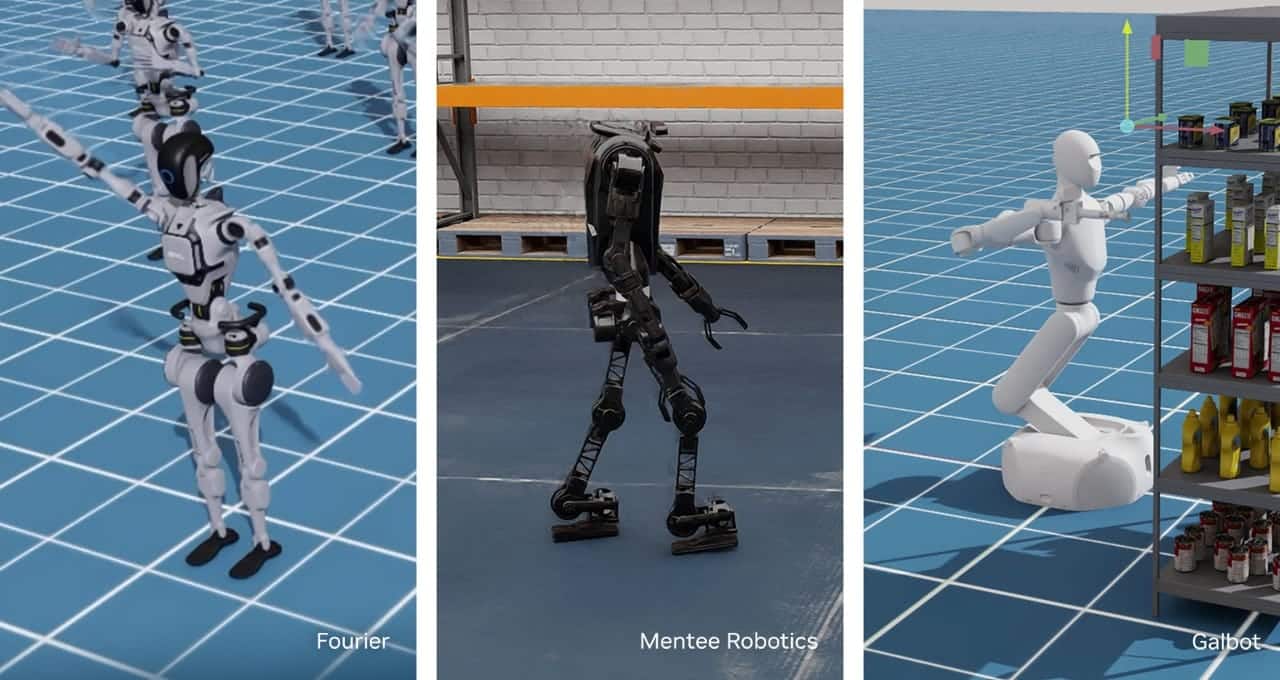Sure! Here is the translation of the provided text into American English:
NVIDIA has unveiled a series of advanced artificial intelligence and simulation tools that promise to accelerate the development of humanoid robots and enhance learning capabilities in robotics. These innovations, presented at the Conference on Robot Learning (CoRL) in Munich, include the general availability of its NVIDIA Isaac Lab robotic learning framework, six new workflows for humanoid development in the GR00T Project, and tools for world modeling using technologies such as NVIDIA Cosmos and NeMo Curator.
NVIDIA Isaac Lab: The Open Robotic Learning Framework
NVIDIA Isaac Lab is an open-source robotic learning platform based on NVIDIA Omniverse, designed to facilitate the development of control policies at scale for robots of various forms, from humanoids to quadrupeds. This unified platform allows developers to train AI models for robots capable of handling complex movements and interaction environments, accelerating the process of creating robotic applications.
Among the prominent names in robotics that have already adopted Isaac Lab are Agility Robotics, Boston Dynamics, and XPENG Robotics. With the backing of this tool, technology companies around the world are advancing their robotics projects more swiftly and collaboratively.
GR00T Project: Advanced Capabilities for Humanoid Robots
The GR00T Project is an initiative by NVIDIA aimed at creating a global ecosystem of humanoid robot developers by providing libraries, base models, and specific workflows for the development of advanced robots. The six GR00T workflows are designed to help humanoid developers overcome the most complex challenges in this field:
- GR00T-Gen: 3D environment generation with generative AI based on OpenUSD.
- GR00T-Mimic: Generation of motion and trajectories for robots.
- GR00T-Dexterity: Skillful and precise manipulation.
- GR00T-Control: Full body control in robots.
- GR00T-Mobility: Navigation and locomotion.
- GR00T-Perception: Multimodal perception for advanced sensors.
Jim Fan, research manager at NVIDIA, noted that humanoid robots represent “the next wave of embedded AI,” and that these workflows are designed to meet the technological demands of this emerging trend.
Advanced Tools for World Modeling
World modeling — digital representations of environments that allow robots to predict how to interact with objects — is a process that requires large amounts of data and significant computing resources. To address this challenge, NVIDIA has launched the Cosmos Tokenizer and NeMo Curator, two tools that optimize video and image data compression and curation.
- NVIDIA Cosmos Tokenizer: Provides high-quality, efficient visual tokenization, with compression rates up to 12 times higher than current standards, enabling the development of generative applications across various visual domains.
- NeMo Curator: Optimizes video data processing through an automated and scalable pipeline, achieving processing across multiple GPUs and handling up to 100 petabytes of information. This tool is specifically designed to reduce development time and costs, directly benefiting the robotics industry.
Eric Jang, VP of AI at 1X Technologies, stated that the Cosmos Tokenizer allows the company to train world models more efficiently, with high compression and retention of visual fidelity.
Fostering the Robotic Learning Community
NVIDIA has shared 23 research papers and organized nine workshops at CoRL, covering topics from visual language model integration to complex task planning strategies and skill acquisition through human demonstrations. Two of the most notable advancements include SkillGen, a system based on synthetic data generation for training robots, and HOVER, a base model for controlling locomotion and manipulation in humanoid robots.
Additionally, the company is promoting collaboration with the developer community through partnerships with Hugging Face and the creation of specific programs like the NVIDIA Humanoid Robot Developer Program, where developers can access exclusive resources and specialized support.
Availability and Access
NVIDIA Isaac Lab 1.2 and the Cosmos Tokenizer are already available on GitHub and Hugging Face, while NeMo Curator will be available by the end of the month. NVIDIA will also soon launch the new workflows for Project GR00T, along with a series of guides and tutorials to help developers integrate into this ecosystem.
This set of tools not only represents a technological advancement but also an opening toward a more collaborative development ecosystem. Through this combination of AI and simulation, NVIDIA aims to accelerate the evolution of robotics and, particularly, humanoids, paving the way for a future where robots are effective companions in complex and ever-changing environments.

